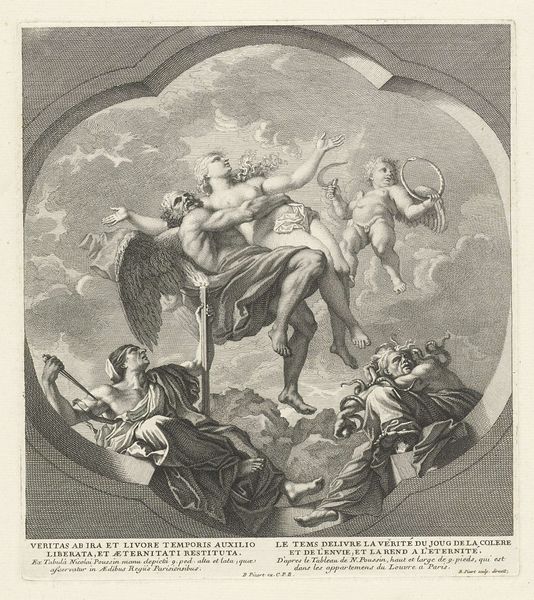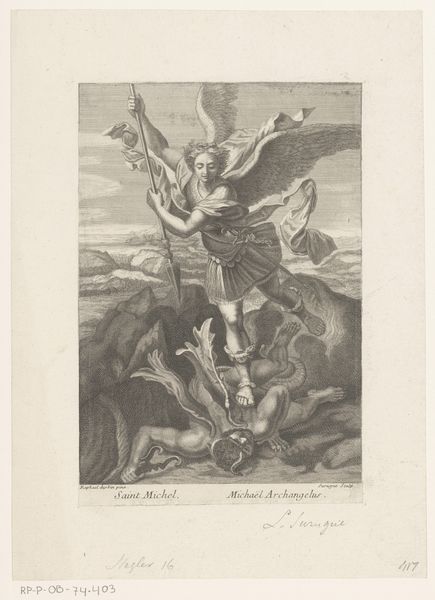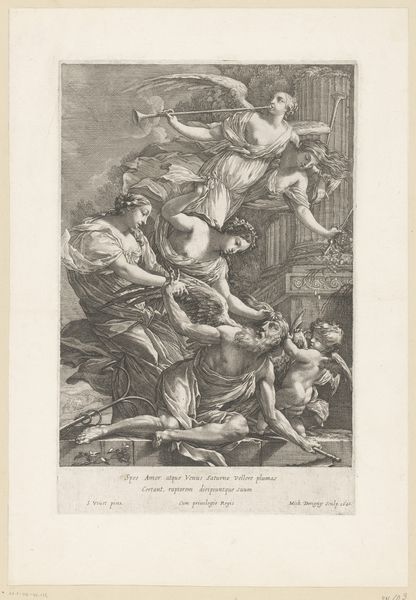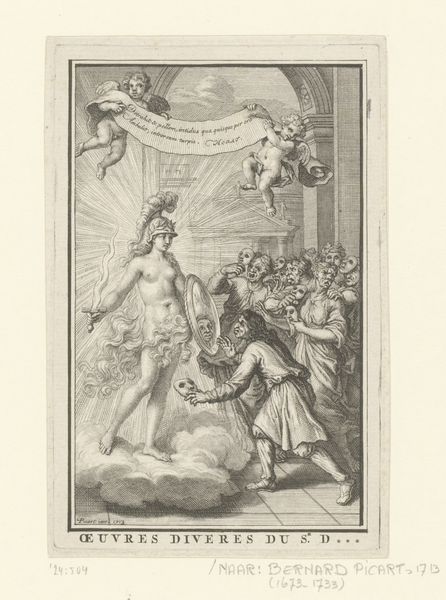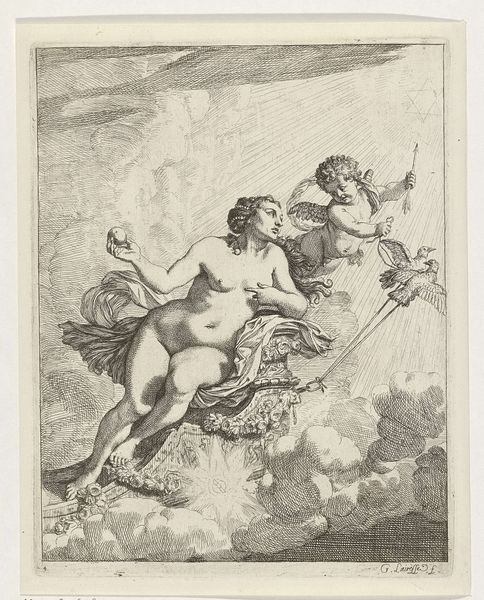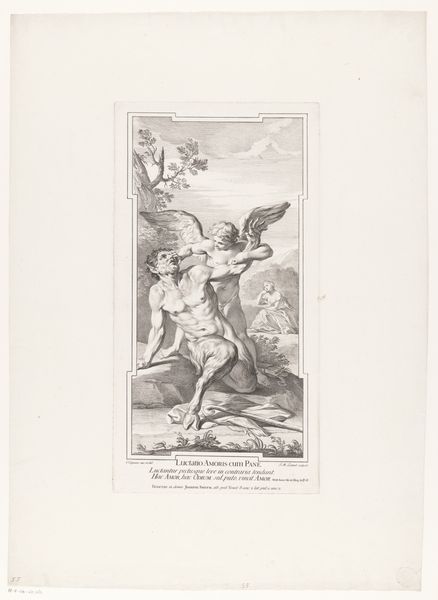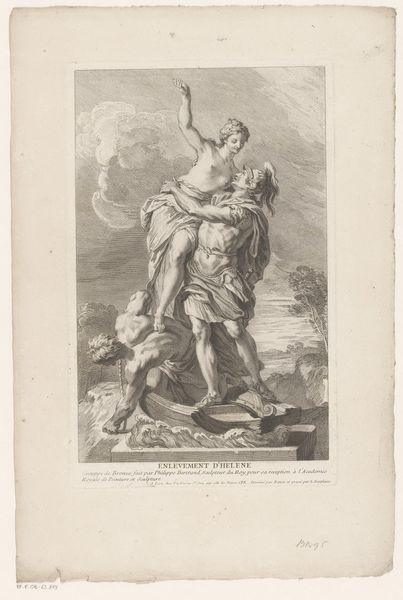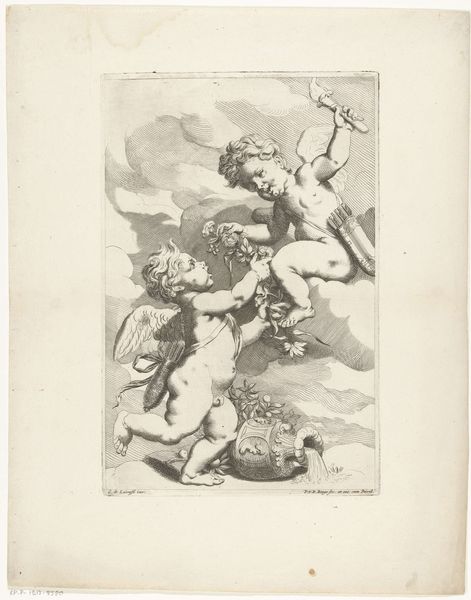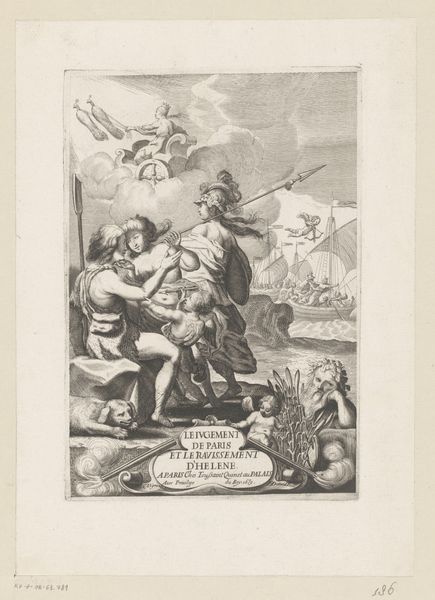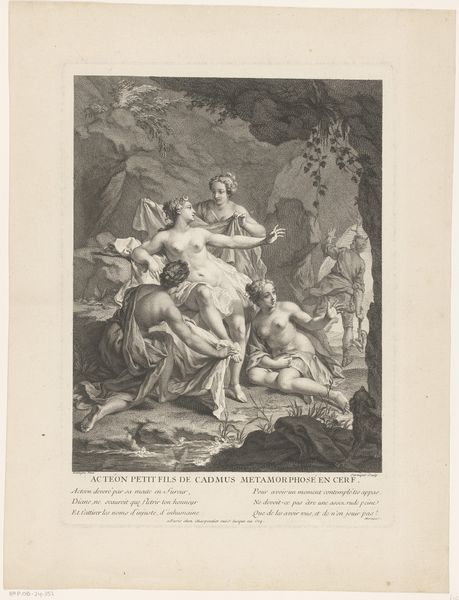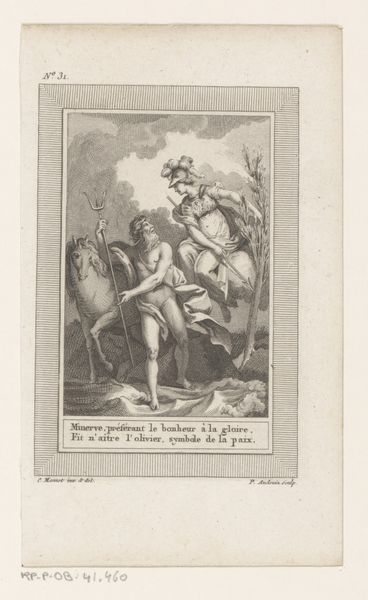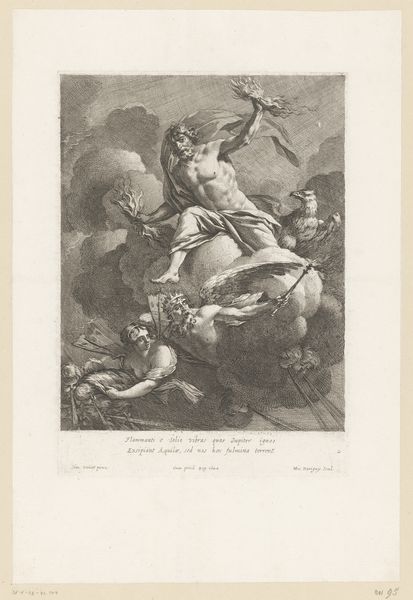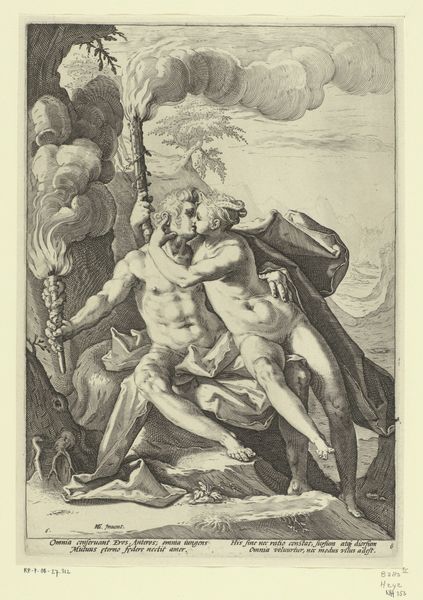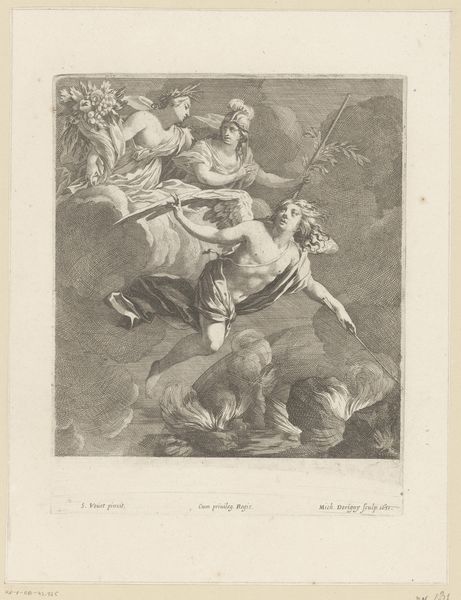
print, engraving
#
allegory
#
baroque
# print
#
old engraving style
#
pencil drawing
#
history-painting
#
nude
#
engraving
Dimensions: height 304 mm, width 207 mm
Copyright: Rijks Museum: Open Domain
Michel Dorigny made this print, *Fortuna wordt tegengehouden*, using etching, sometime in the mid-17th century. The etching process involves using a needle to draw an image on a wax-coated metal plate. The plate is then dipped in acid, which bites into the exposed lines, and finally inked and printed. Look closely and you can see how the artist has used a network of fine lines to create tone and shadow, defining the figures of Fortuna, Amor, and other allegorical figures. Dorigny was one of the foremost printmakers of his day, a master of nuance. His work was often reproductive; this particular print is after a painting by Simon Vouet. By translating Vouet’s painterly effects into the linear language of etching, Dorigny demonstrated his technical virtuosity. This was at a time when printmaking was becoming increasingly important, not only as a means of disseminating images, but as a recognized art form in its own right. So the next time you look at a print, think about the labor that went into its making.
Comments
No comments
Be the first to comment and join the conversation on the ultimate creative platform.
